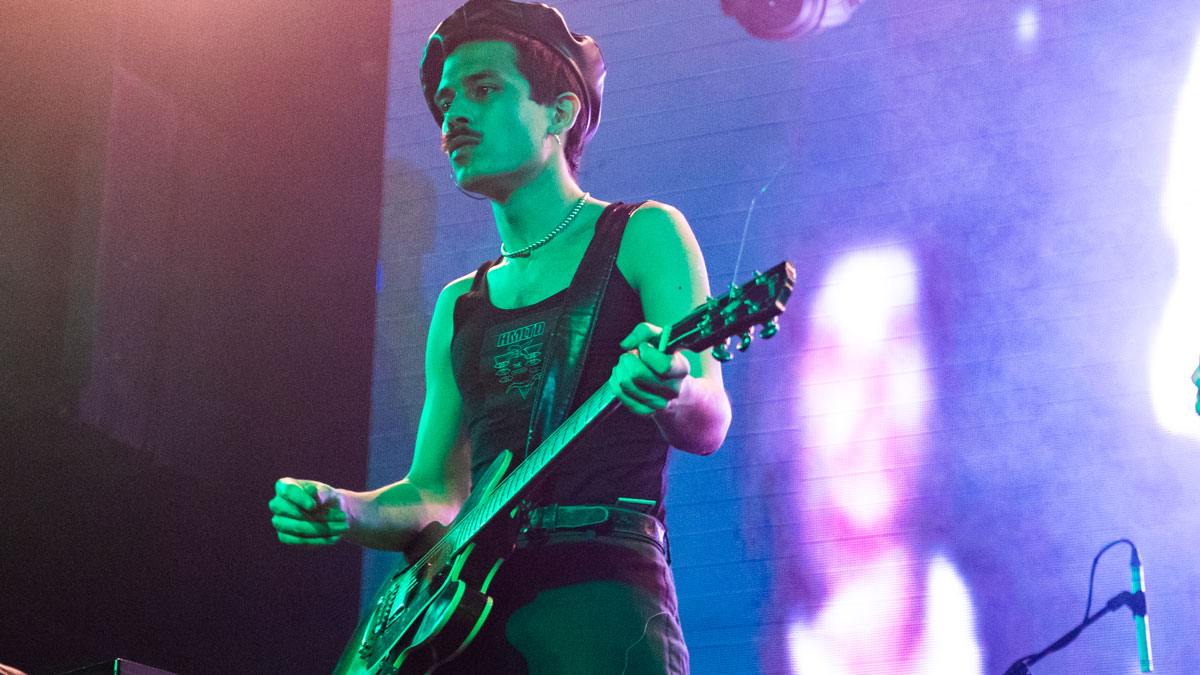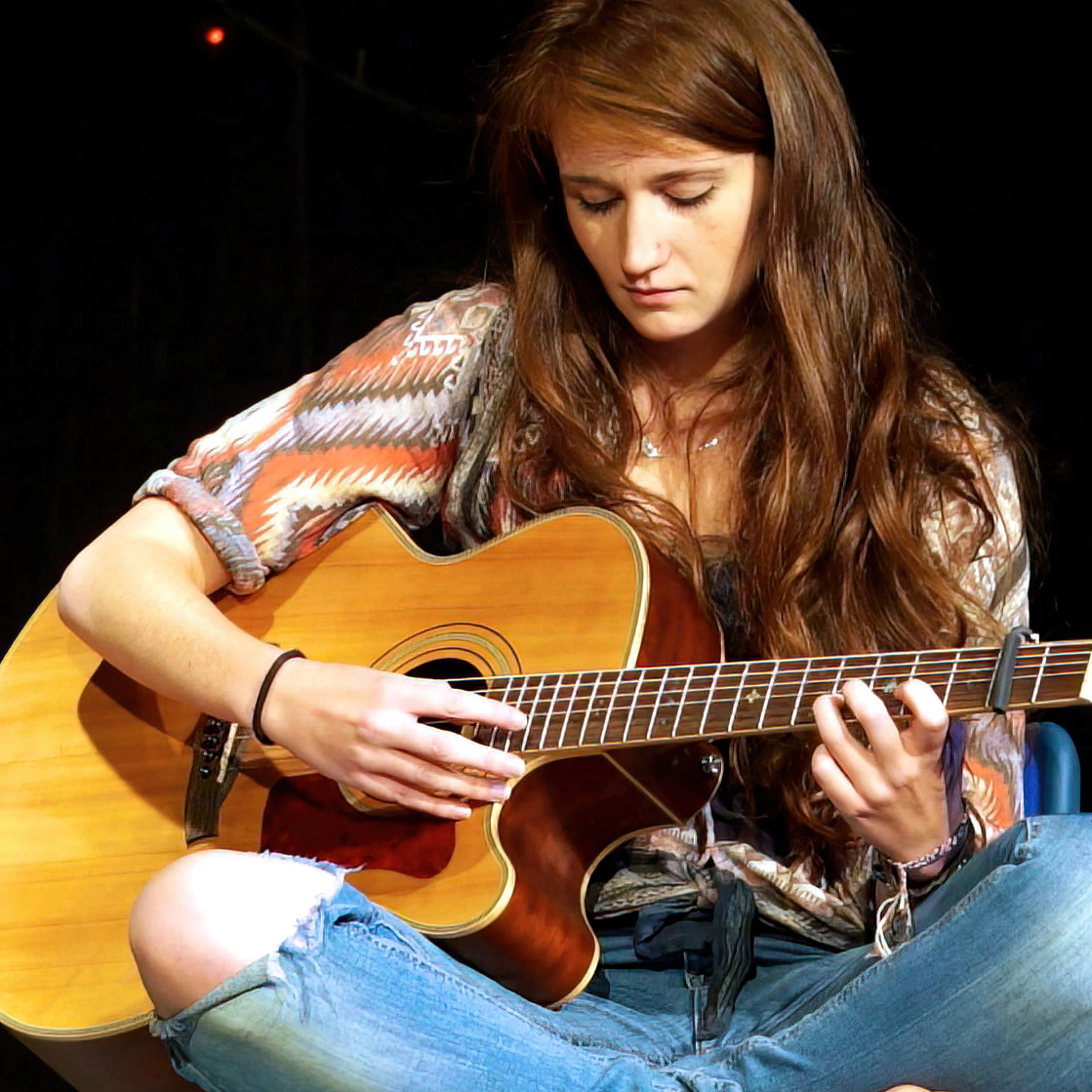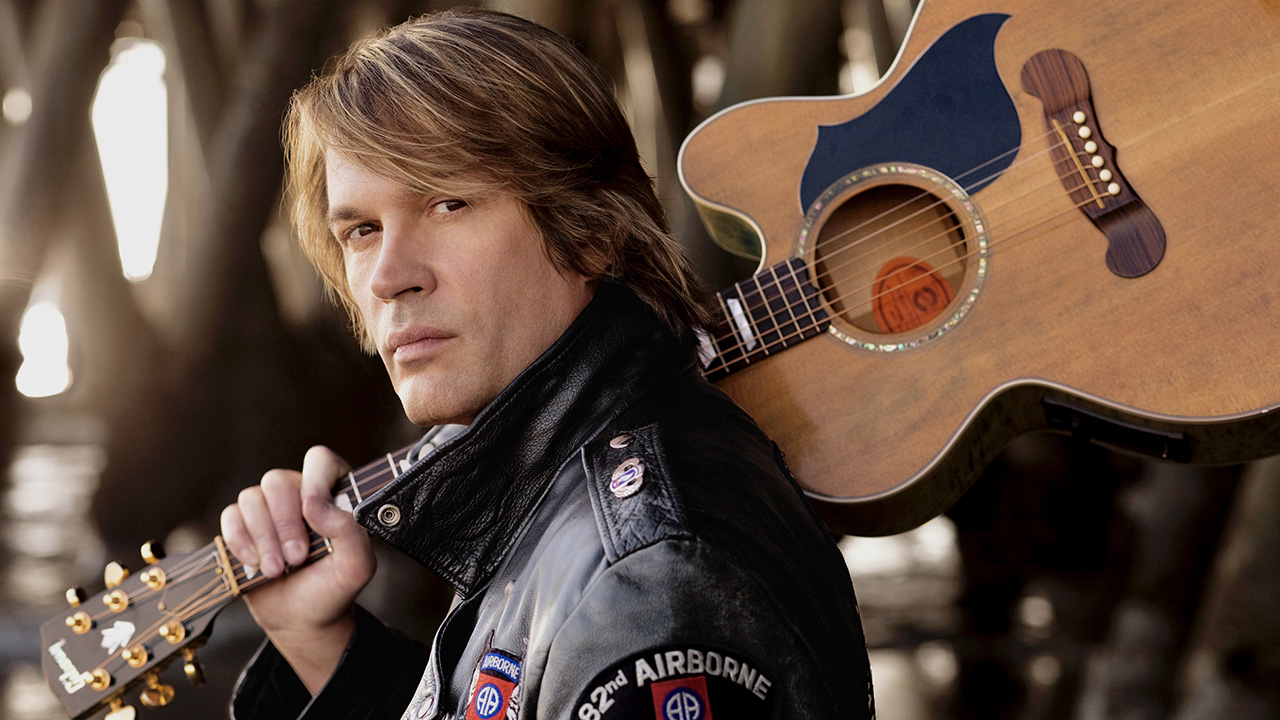Meet HMLTD’s Duc Peterman, the jazz-schooled guitarist who rejects the “macho side of guitar playing” and wants his tones to sound like a giant parasitic worm
With a bizarre new concept album, HMLTD are defying the expectations of guitar‑based music by treating the instrument like an orchestra – while embracing some “very stupid ideas”

When their debut album West Of Eden landed in 2020, London-based art-punk collective HMLTD established themselves as one of the most ambitious outfits to emerge from the UK music scene in recent years. With flamboyance and wit, they took aim at toxic masculinity and the patriarchal-capitalist society of the West.
With gleeful abandon, they cut and spliced elements of glam rock, punk, EDM, and ’80s synth-pop together like an old iPod Shuffle possessed. With custom-built sets, extravagant outfits and experiments into multi-sensory stimuli (such as the smell of burning human hair), they transcended the notion of ‘the rock show’ to immerse their audiences in full-blown works of surrealist avant-rock theatre.
Now, they return with The Worm – a nine-track allegorical concept album that sets to music an absurdist horror story in which a giant parasitic worm swallows England. The story was created by the band’s vocalist and abstract thinker-in-chief Henry Spychalski.
The next stage of development was for guitarist and producer Duc Peterman and keyboardist Seth Evans to take charge of imagining a musical universe wild and wriggly enough to represent Spychalski’s titular invertebrate.
As Duc recalls: “Henry came to mine one day and he told me that he’d had this crazy dream in which he was a child soldier during the Vietnam war. He was hit by a bullet and was bleeding to death. Then, suddenly a crowd of children assembled around him and ripped his belly open. His belly is full of worms and worms start gushing out. He said that he really would like to make the album about this vivid dream, and I thought it was the best idea he’d come up with.”
The album was created over the course of two years with a cast of 47 musicians, including a gospel choir and 16 string players from the Greek National Orchestra whom Peterman conducted. He describes the sonic mission thus: “We wanted the music to reflect the narrative that Henry put forward with the guitars and the orchestra and everything that we had at our disposal.”
At his direct disposal, Peterman had a vintage Gibson ES-335, which he describes as his “most prized guitar” for its dashingly good looks and its “sweet and dark tone” that, in his opinion, is unmatched by all the other guitars he’s ever played.
All the latest guitar news, interviews, lessons, reviews, deals and more, direct to your inbox!
He also worked with a vintage American Strat that he’d picked up at a local pawn shop –somewhat miraculously – for forty quid, an acoustic 12-string that naturally evokes Jimmy Page circa Led Zeppelin III and Houses of the Holy, and lastly, a bouzouki – as suggested by their Greek drummer, Achilleas Sarantaris.
Duc’s personal assortment and the wider instrumentation of the record was deployed with one overarching aim: to serve the idea.
“I have a lot of recordings on my phone of the keyboardist and I trying to talk about musical motifs, musical sound and how we could represent the feeling of a worm,” explains the Parisian guitarist, who possesses a jazz school education and an in-built aversion to musical mediocrity.
“For example, at the end of The Worm there’s this slow-moving orchestral, nausea-inducing thing. We actually had written at the end of the score: ‘play with the sensation of the worm’. I have this great memory of conducting the orchestra with kind of a worm movement and trying to imitate that.”
Likewise, Duc’s guitar contributions are frequently designed to convey feelings and images as much as they are to provide rhythmic and melodic outlines for the songs.
“I think the mark of a great guitarist is more than just putting in a great riff,” he says. “It’s really seeing how your guitar playing can be beneficial to the song. We like to use the guitar as more than just its traditional band settings – almost like a sound generator.”
Take, for example, the very first instance of guitar on the record, when a chaotic crescendo segues between the tracks Worm’s Dream and Wyrmlands. Here, Duc delivers what he describes as “this really obnoxious white noise” with the aid of an Eventide Space pedal and a homemade expression switch which, he says, creates a “whooshing sound, with the space of the reverb suddenly changing.”
He adds: “Unlike an expression pedal, which usually has some kind of gradient, this one just goes from zero to 100, and I use it to control the pitch and the size of the reverb.”
Elsewhere, there are evocative experiments in tonal dissonance, and adventures in layering, inspired by having scored the orchestra, that give a cinematic grandeur to his guitars.
“There’s actually moments where there’s five or six guitar parts at the same time,” he explains, pointing to the dense climaxes of Saddest Worm Ever and The End Is Now.
“We tried to conceive the guitar the same way you would conceive different instruments in an orchestra. You’d have violin one, violin two, viola, cello et cetera, and we tried to recreate the same thing by layering guitars on top of one another.” He smiles. “I don’t think it sounds too crowded. It still feels quite emotional, which I’m happy about – and not too gratuitous!”
Gratuitousness, in the sense exhibited by archetypal male guitar hero figures, is also something that Duc naturally avoids, and there are very few examples of ‘traditional’ guitar solos on the album, save for a gloriously ’70s-inspired Mu-Tron Phasor-soaked fuzz fest at the conclusion of The End Is Now. Asked if such omissions are in any way related to the band’s strong stance against toxic masculinity in all its forms, he pauses for thought and a puff on a hand-rolled cigarette.
He hasn’t thought about this before, but he’s chewing it over with great interest as we speak. “I don’t really consider myself as someone who enjoys showing off and I prefer to take more of a backseat when it comes to the gigs,” he ponders. “I don’t have much of a connection with the more macho side of guitar playing.”
The pride themselves on creating what they call “a safe space for people to come and enjoy the music and be able to express their gender, personality and sexuality any way they want.” With that in mind, Duc says, with a hint of concern, “I hope that people don’t see a toxic male guitar player when they see me on stage!”
Quite the opposite. This inventive player seems to re-contextualise the instrument as a tool for busting boundaries and defying the expectations of guitar-based music. On The Worm, he and the band remain as defiantly genre-agnostic as ever, writhing through free jazz riffing (Wyrmlands), a vintage soul, folk and psych-rock fusion (The End Is Now), and a Queen/Brian May-influenced rock opera of truly epic proportions (The Worm).
As Duc puts it: “With HMLTD – even though I still consider it to be a punk band – we try to explore a lot of different genres. We get excited by very stupid ideas, so we really don’t impose any kind of preconceived notion of how the song should sound.”
But the genre-hopping capabilities of HMLTD also speak to the listening habits of a generation whose attention spans have been shortened by social media scrolling and the infinite choices presented by streaming platforms. By keeping things unpredictable, the band lessens the temptation for listeners to flit between songs, or – worse – move on to listening to other artists.
Duc reveals the secret to their style-smashing success. “It’s a process of trial and error for everything you hear on the record.” Noting that the band’s typical working practice involves demoing tracks five or six times before committing to anything, he adds with a laugh: “There’s a lot of very mediocre guitar parts that didn’t make it!”
But he works hard to bring interest and cohesion through his contributions, even keeping a folder of pre-recorded ideas and textures – such as the previously mentioned white noise that closes Worm’s Dream – on his computer, ready to drop in and out of songs during the mixing process to see what sticks.
“Because I also do all the production in the band, I’ve seen all of the guitar playing as an extension of the production,” he says. “So I also see it in terms of how we can fit it in the mix from a sonic perspective.”
Out of his twin interests in playing and producing has also grown a burgeoning passion for amateur effects building. “I’ve got a friend who builds a lot for me,” he says. “And before the album, I was like, ‘I really want to build my own guitar pedals,’”
To feed his fascination, he recalls receiving from her a “massive PDF on electrical engineering” that he’s still digesting, as well as plenty of hands-on direction. “She teaches me about how to look at electrical current and understand the topography of fuzz et cetera. She shows me how to solder. Then, I solder my own. Most of the time I end up not doing a very good job, but there’s a few that I’ve managed. I have my own fuzz that I built, that I use quite a lot.”
Fittingly, the tones that emanate from this Fuzz Factory-inspired self-build crawl out in great big fat hairy caterpillar-shaped waveforms, and – if you think about it – what other effect could embody the album’s theme better than that?
- The Worm is out now via Lucky Number.
Since graduating university with a degree in English, Ellie has spent the last decade working in a variety of media, marketing and live events roles. As well as being a regular contributor to GuitarWorld.com, she currently heads up the marketing team of a mid-scale venue in the south-west of England. She started dabbling with guitars around the age of seven and has been borderline obsessed ever since. She has a particular fascination with alternate tunings, is forever hunting for the perfect slide for the smaller-handed guitarist, and derives a sadistic pleasure from bothering her drummer mates with a preference for wonky time signatures.

